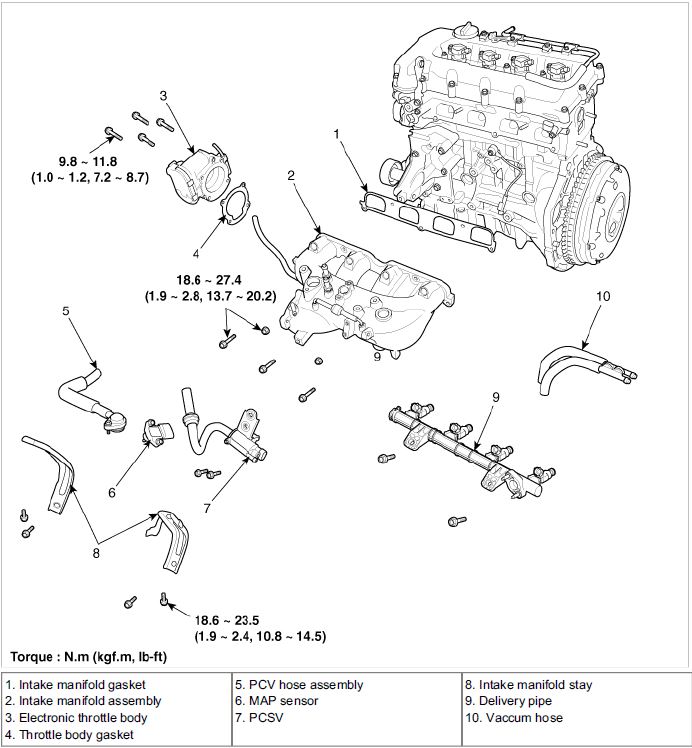Hyundai Genesis engine oil capacity in quarts – liters. Manufactured in : 2008, 2009, 2010, 2011, 2012, 2013, 2014.
- Hyundai Genesis with engine 2.0 l.
- Car fuel: gasoline.
- Hyundai Genesis engine cod.
- Engine capacity: 1998 ccm (121,31 cubic inches).
- Hyundai Genesis engine oil capacity: 5.3 liters or 5.6 quarts US or 1.4 gallons US.
- Hyundai Genesis manual gearbox oil capacity: 2.0 l or 2.11 qt or 0.53 gal.
- Hyundai Genesis automatic gearbox oil capacity: 10 l or 10.56 qt or 2.64 gal.
- Hyundai Genesis recommended engine oil: 5w30.
Engine Information:
Hyundai Genesis with engine 2.0l:
General:
Type: In-line, Double Overhead Camshaft
Cylinder Bore: 86mm(3.385)
Cylinder Stroke: 86mm(3.385in)
Total Displacement: 1998cc (121.92cu.in)
Compression Ratio: 9.4 : 1
Firing Order: 1-3-4-2
Valve Timing:
Intake Valves:
Opens (ATDC/BTDC): ATDC 11° ~ BTDC 34°
Closes (ABDC): ABDC 67° ~ 22°
Exhaust Valves:
Opens (BBDC): BBDC 54° ~ 14°
Closes (ATDC): ATDC -10° ~ 30°
Valve Lengths:
Intake: 11.3.18mm (4.4559in)
Exhaust: 105.79mm (4.1649in)
Stem O.D:
Intake: 5.465 ~ 5.480mm (0.2151 ~ 0.2157in.)
Exhaust: 5.458 ~ 5.470mm (0.2149 ~ 0.2153in.)
Face Angle: 45.25° ~ 45.75°
Margin:
Intake: 1.02 (0.0401in.)
Exhaust 1.09 (0.0429in.)
Camshaft Height:
Intake: 43.80mm (1.7244in.)
Exhaust: 45.00mm (1.7716in)
Journal O.D:
Intake No.1: 30mm (1.1811in.)
Intake No.2, 3, 4, 5: 24mm (1.4173in.)
Exhaust No.1: 36mm (1,4173in.)
Exhaust No. 2, 3, 4, 5: 24mm (0.9449in.)
Thermostat:
Valve opening temperature: 82° C (177°F)
Full-opening temperature: 95° C (201°F)
Inspection:
Spark Test:
Is your car misfiring? One of your spark plugs may be not be firing.
Remove the ignition coil connectors (B) and ignition coils.
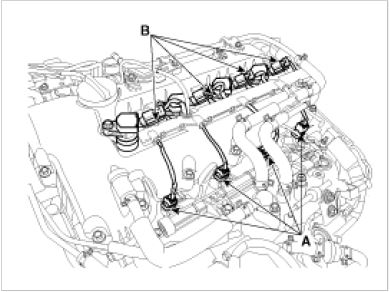
Using a spark plug socket, remove the spark plugs.
One cylinder at a time, connect the spark plug to the ignition coil and plug it back in the the connector.
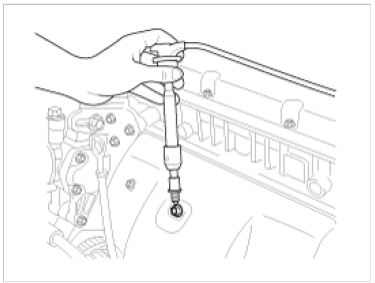
Ground the spark plug to the engine.
While holding it to a ground, have a buddy crank the motor over.
Check for spark.
Ensure that it is not just a bad spark plug or air/fuel mixture before continuing.
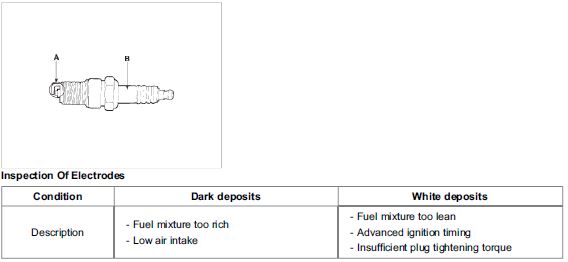
No spark diagnostics:
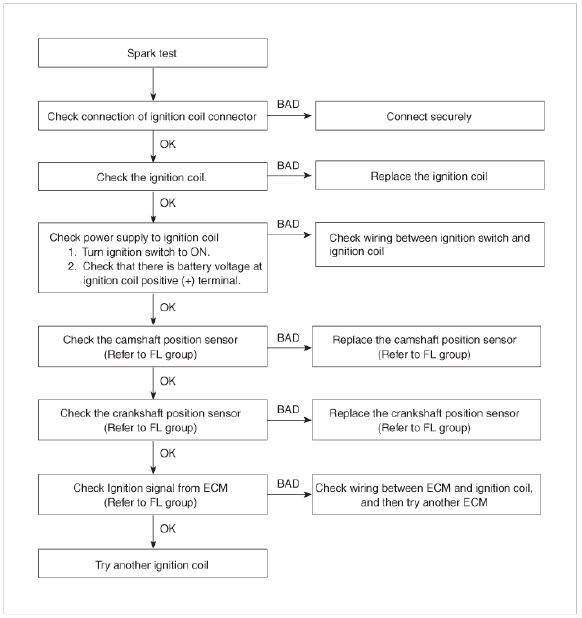
Compression Pressure Inspection:
Warm engine to operating temperature then turn off engine.
Disconnect the injector connectors (A), ignition coil connectors (B) and ignition coils.

Remove spark plugs using a 16mm spark plug wrench. Remove all four.
Insert a compression gauge into the first spark plug hole. Ensure it threads all the way in and seals tightly.
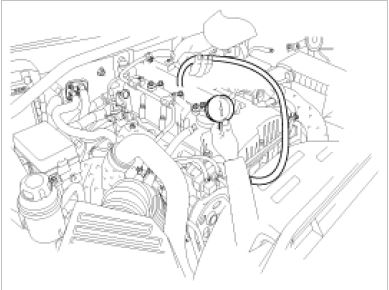
Ensure you have a full battery to obtain 200 rpm cranking speed.
Crank the engine over to measure the compression. Apply full throttle while doing so.
Repeat procedure on all cylinders.
Compression pressure to aim for is: 1,283kPa (13.0kgf/cm², 185 psi)
Minimum pressure: 1,135kPa (11.5kgf/cm², 164 psi)
Difference between each cylinder: 100kPa (1.0kgf/cm², 15 psi) or less.
If the cylinder compression in 1 or more cylinders is low, pour a small amount of engine oil into the cylinder through the spark plug hole and repeat the compression test for those cylinders. If adding oil helps the compression, it is likely that the piston rings and/or cylinder bore are worn or damaged.
Reinstall spark plugs.
Reconnect the injector connectors and ignition coil connectors.
Troubleshooting:
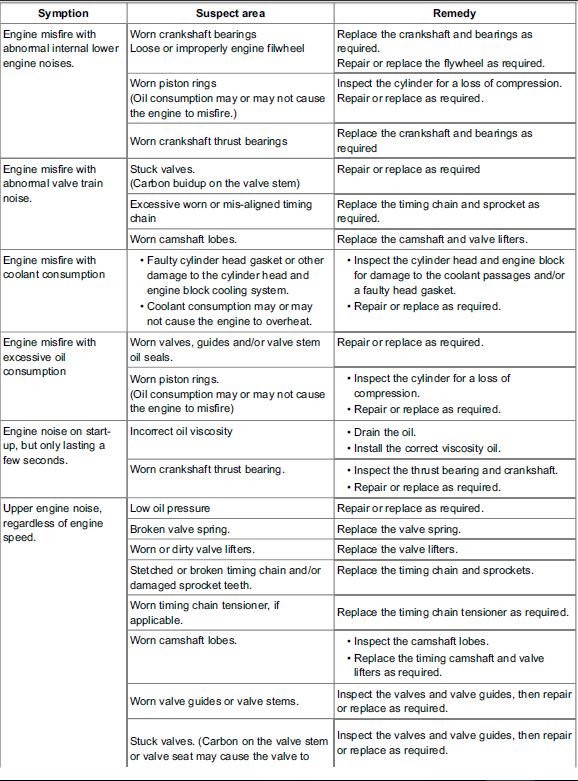
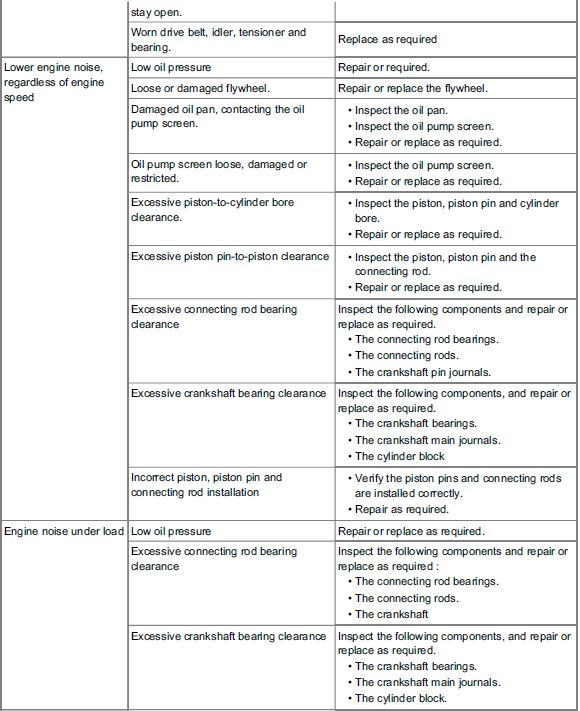

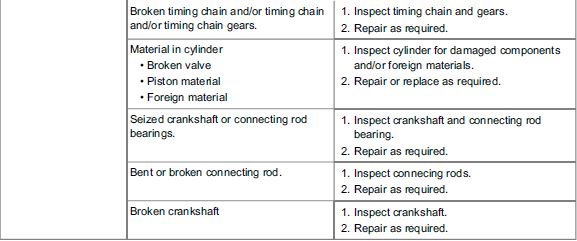
Top End:
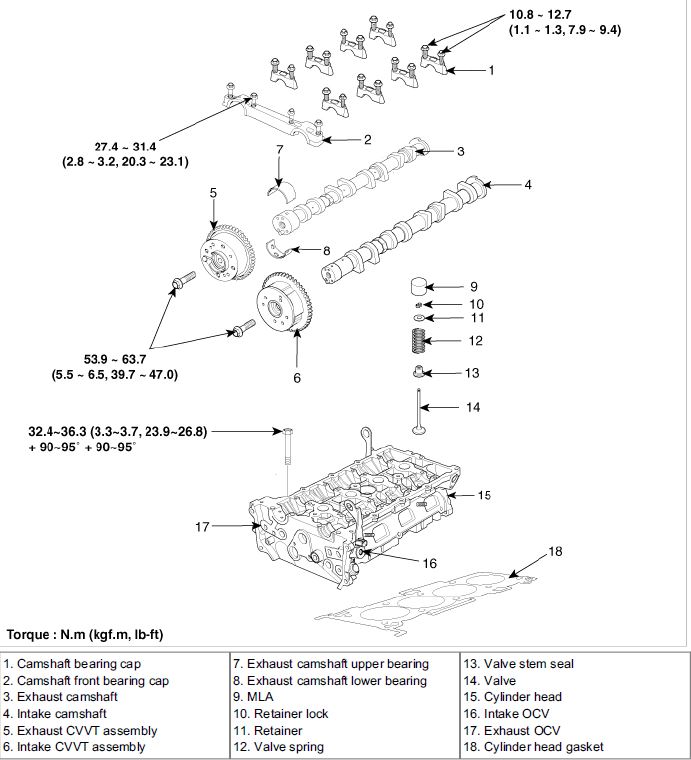
Removal of cam bearing cap sequence on the Hyundai Genesis Coupe 2.0T
Necessary process for upgrading to aftermarket camshafts.
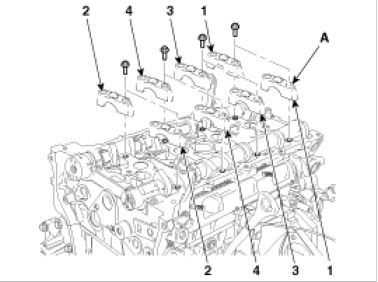
To remove the head on a Theta 2.0L Hyundai Genesis Coupe engine
Using triple square wrench, uniformly loosen and remove the 10 cylinder head bolts, in several passes, in the
sequence shown.
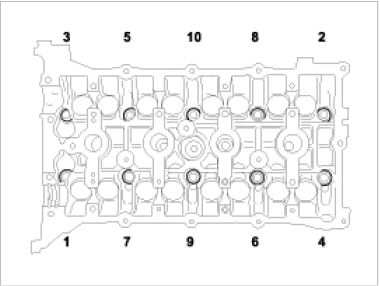

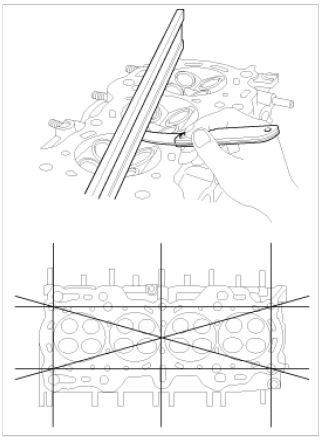
Installation of Hyundai Genesis Coupe head bolt tightening sequence:
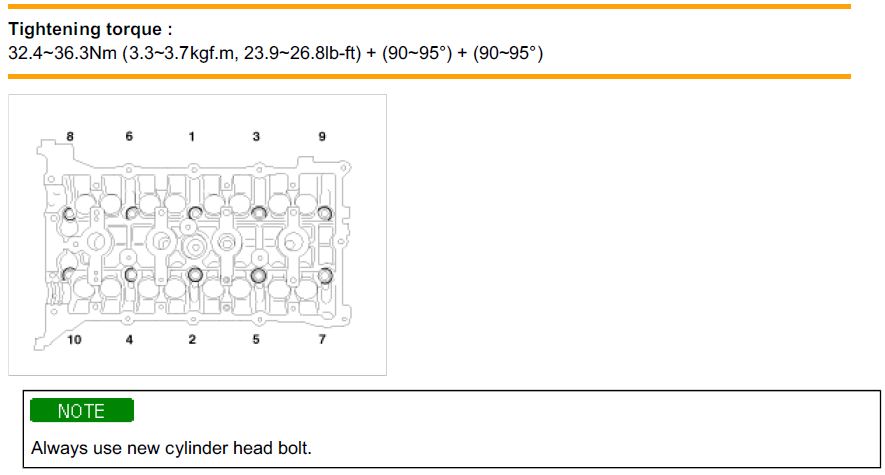
*Additional Note: Always use a new head gasket.
Installation of Hyundai Genesis Coupe camshaft cap tightening sequence:
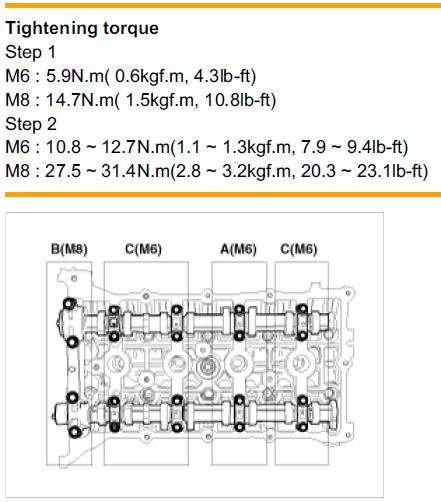
Installation of Hyundai Genesis cylinder head cover bolts (valve cover):
Using a new head cover gasket.
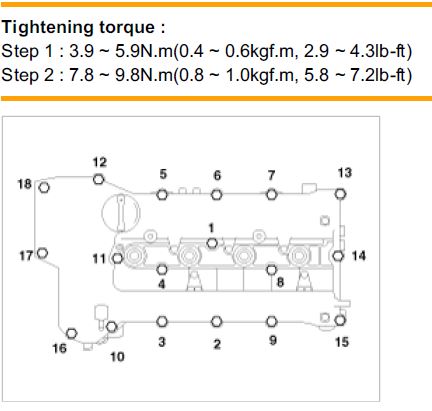
Bottom End:

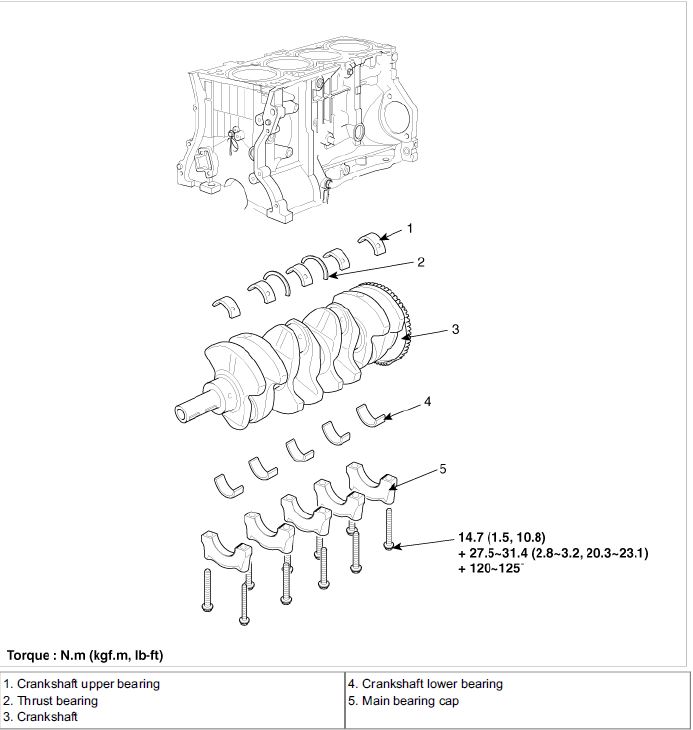
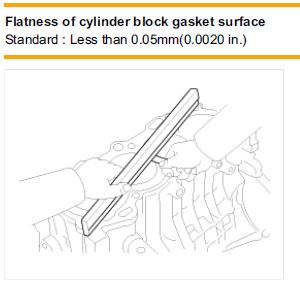
Connecting Rods:
When reinstalling, make sure that cylinder numbers put on the connecting rod and cap at disassembly match.
When a new connecting rod is installed, make sure that the notches for holding the bearing in place are on the
same side.
Replace the connecting rod if it is damaged on the thrust faces at either end. Also if step wear or a severely rough
surface of the inside diameter of the small end is apparent, the rod must be replaced as well.
Using a connecting rod aligning tool, check the rod for bend and twist. If the measured value is close to the repair
limit, correct the rod by a press. Any connecting rod that has been severely bent or distorted should be replaced.
Timing Components:
The Hyundai Genesis Coupe uses chain driven timing.
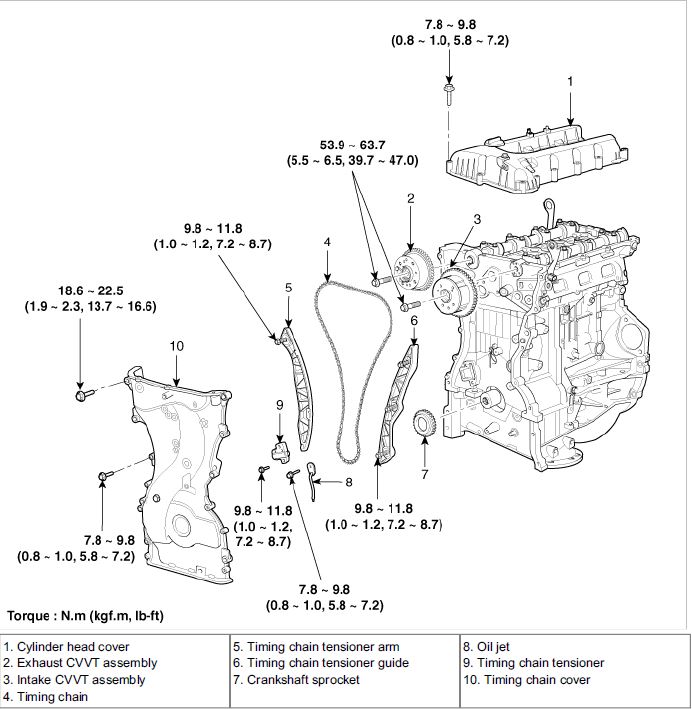
Hyundai Genesis 2.0L Intake Manifold:
